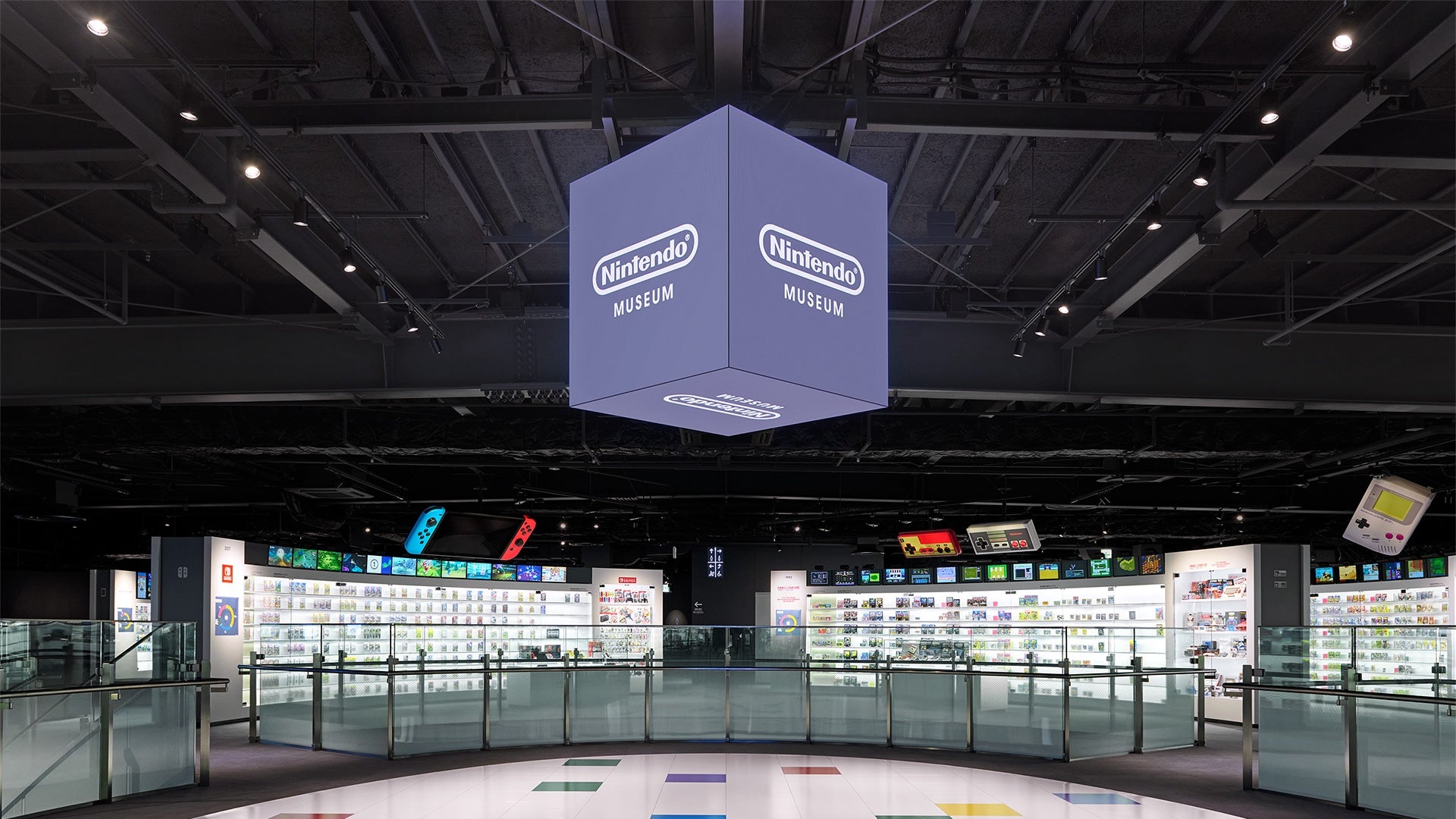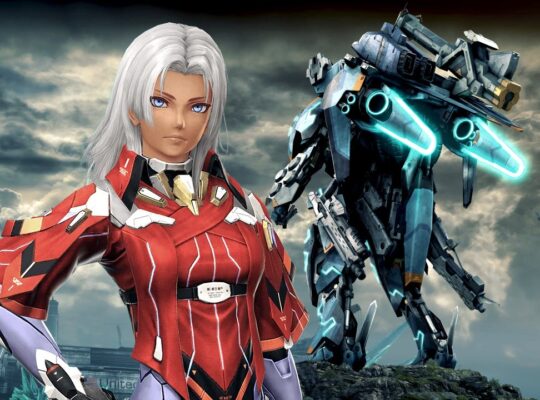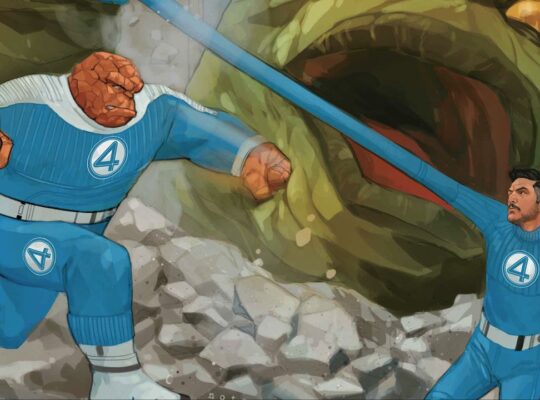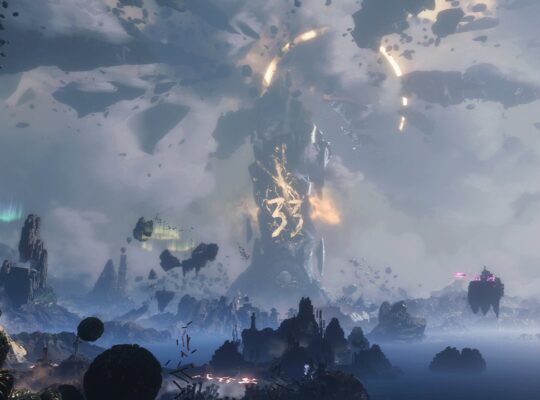A good open-world game often has that emotional moment when the world opens up for the very first time. Take peering out at Hyrule from the grand plateau after leaving the first cave in The Legend of Zelda: Breath of the Wild, for example. And while the Nintendo Museum in Kyoto is a comparatively small sandbox to Breath of the Wild’s huge open world, reaching the exhibition floor after climbing the escalator for the first time feels just as special. Greeted with familiar music and sound effects, you’re instantly invited to a Nintendo fan’s paradise that extends 360 degrees.
As you enter the exhibition floor, jumbo-sized versions of different Nintendo controllers and consoles can be seen hanging from the ceiling, with all the hardware and software that Nintendo has produced over the years displayed beneath them. Like Breath of the Wild’s open world, no correct order to the exhibits, so you are free to roam in any direction you please. And despite the sheer number of exhibits, I never felt overwhelmed or lost. It almost felt as if Nintendo was using its expertise in level design to curate the museum.
However, despite the abundance of Nintendo products on display there are very few items like development materials, original drawings, or prototypes that you can’t find anywhere else, which was disappointing. And for a museum, the amount of explanation and context that Nintendo gives to its displays is also surprisingly limited. As a longtime Nintendo fan, I found myself hoping for more than just final products, and I would have liked some deeper context added to the exhibits.
Instead of focusing on its past, Nintendo seems to following the same ethos as it does for its games: make an experience thatanyone can pick up and play, with minimal tutorial explanations. The Nintendo Museum lets you experience the company’s 135 year history with that same philosophy in mind.
From the NES to the Nintendo Switch, and GameBoy to 3DS, all the game consoles that Nintendo has produced are on display together with their own games as well as some of the major third-party titles. There are even some of those nostalgic peripherals. Gameplay for the games on display can be seen on screens as well.
A little bit of context is added to each display, showing how sales were divided per territory for each console, what series started on each hardware, and what kind of new challenges and technology were introduced.
Almost all of the software has both a Japanese, North American and European package at display. Just by walking around, it becomes apparent how much more global the industry has become. While games often had different titles and package art depending on the region during the NES days, releases on the Nintendo Switch pretty much all look the same for each territory.
If you’re visiting the museum from overseas, seeing the Japanese package art for your favorite games while still being able to take a nostalgic glimpse at the art you grew up with creates a nice balance. Old TV commercials and video game magazines from multiple regions also take visitors back to their childhood. It happened to me a few times when I suddenly saw an image that I didn’t even know I was nostalgic for.
It is true that almost all of what you can see on this floor can be found through Google, YouTube, or a good retro video game store. However, having everything cleverly displayed on the same floor does feel unique and may lead to some new discoveries.
For example, while the Wii U might not exactly be Nintendo’s most successful console, seeing it on display between Nintendo’s other consoles made me rediscover its importance. Major modern franchises such as Splatoon and Mario Maker debuted there, the idea of being able to play games on both your TV and a portable device that made the Nintendo Switch so popular was conceived, and the Amiibo product lineup launched during the Wii U era.
Of course, Nintendo wasn’t making video games when the company was founded way back in 1889. It all started with Hanafuda cards and later expanded to playing cards in North America, where they collaborated with Disney. Some visitors will be surprised to see products that feature Mickey Mouse, Lady and the Tramp and Bambi, instead of Mario, Pikachu and Kirby.
Looking at Nintendo’s older products, it becomes obvious that Nintendo already had that playful and inventive spirit long before they started to expand their business into video games. From playing cards, they went on to produce a wide array of board games that came in all sorts of themes, to even a baby stroller and “light telephone”, which is an obscure device that uses light to transport sound. It was thought of by Gunpei Yokoi, best known as the father of the GameBoy. Yokoi’s unique ideas like the Ultra Hand, the Ultra Machine and the Love Tester made Nintendo even more unique in the late 60’s, w eventually shapeshifting into the inventive video game company it istoday.
The museum presents the history of Nintendo and its characters through different, creative, themes, showing how elements like the Nintendo logo changed over time, how Mario’s question block evolved, the history of products that incorporate music, and products played by moving the body.
While there isn’t all that much to learn for Nintendo fans who have done their homework, seeing everything come together in a well designed space functions as a celebration of the company’s rich history.
While you will probably be left disappointed if you were hoping to see never-before-seen, behind-the-scenes material, prototypes of the Nintendo Dolphin, the Wii Remote and the Wii Balance Board are present. But for some reason these items were displayed discreetly at the back of the exhibition floor.
The first floor has a wide array of interactive activities to enjoy.These activities, which are themed after Nintendo’s past products, have the playfulness that people have come to expect from Nintendo’s games. To be honest, I wasn’t exactly impressed when I saw Shigeru Miyamotoshoot at goombas at the museum’s shooting gallery or hit furniture with the Ultra Machine’s batting-cage experience during last month’s Nintendo Museum Direct. However, once I got to experience these myself, I couldn’t help but smile at the care that Nintendo put into these simple yet cute experiences.
At the shooting gallery, my Zapper was accurate enough to hit targets that were quite far away. At the end of the game, each player’s score is counted simultaneously, making it exciting to see who got the highest score.
And the little reactions of the objects that you hit with the Ultra Machine are so cute that I wanted to try every one of the different rooms available. While humble when compared to the kind of spectacle you can experience at the bigger theme park, Super Nintendo Land , the simple but thorough production feels very Nintendo.
Another interactive exhibit let guests play cooperative games using giant NES, SNES and N64 controllers but it proved more difficult than expected. We often found ourselves laughing out loud at our embarrassing faliures.
I especially enjoyed holding a giant Wii Remote together with my colleague to fly around above Wuhu Island, the main location of Wii Sports Resort. A sea-plane can be steered by tilting the Wii Remote up, down, left, and right, to break balloons. It is a game that uses the entire body, which felt like a full-scale embodiment of the Wii’s motion controls. Considering that this is a game that can only be experienced at the Nintendo Museum, it is something that Nintendo fans should not miss, maybe even more so than the items at the exhibition floor.
The Love Tester, which measures the level of romance between two players is also an ideal icebreaker if you’re on a date. Players are told to hold hands or stare at each other and from there, they are tasked to scare away rats and dodge obstacles to keep the balloons attached to their heads safe,moving their hands and head like they would in a Microsoft Kinect game. It’s a simple experience, but one that has the uncanny effect of strengthening bonds with the people you are playing with.
These life-size Mario Party style mini games lets guests interact directly with parts of Nintendo’s history. And it’s through these various experiences that Nintendo showcases its history. As a company that always focused on fun and interactivity, this felt like a natural approach to a museum that celebrates their history.
However, not all of these experiences can be enjoyed in one visit. The Play Ticket that you receive upon entry comes with only 10 coins, which you can spend to play the experiences. The amount of coins required varies depending on the experience, but don’t expect to be able to enjoy more than 4 or 5 experiences in one visit. On top of that, visitors will likely have to stand in line for each activity once the museum opens to the public, though the wait is helped thanks to the iconic Nintendo music playing through the halls
Although the museum doesn’t have the scale and spectacle of Universal Studios’ Nintendo area, the facility is packed with little secrets and easter eggs. Finding each little detail almost feels like exploring a sandbox in Super Mario Odyssey. From Excite Bike characters on the wall, to Mario hanging on a goal pole, and even a Pikmin on the top of the museum roof, you are constantly rewarded for carefully observing the environment.
The lack of never-before-seen historical items and limited explanation can make Kyoto’s Nintendo Museum feel lacking in the traditional sense of the word ‘museum.’ However, its striking exhibition floor, fun, but simple, activities, and attention to detail made me feel like I was enjoying a cozy Nintendo game.
Observing, exploring and playing my way through the facility, I was subconsciously experiencing the company’s rich history in a unique way. While there may not be much new to see or learn about the company’s full history for the die-hard Nintendo fan, visiting the museum reminds you of why you fell in love with the games in the first place. For those less familiar with Nintendo or video games in general, the museum’s interactive nature makes it something that anybody should be able to enjoy anyway.
Nintendo Museum opens its doors to the public on October 2.
Esra Krabbe is an editor at IGN Japan. He can’t wait to buy an Ultra Hand for his kids.












